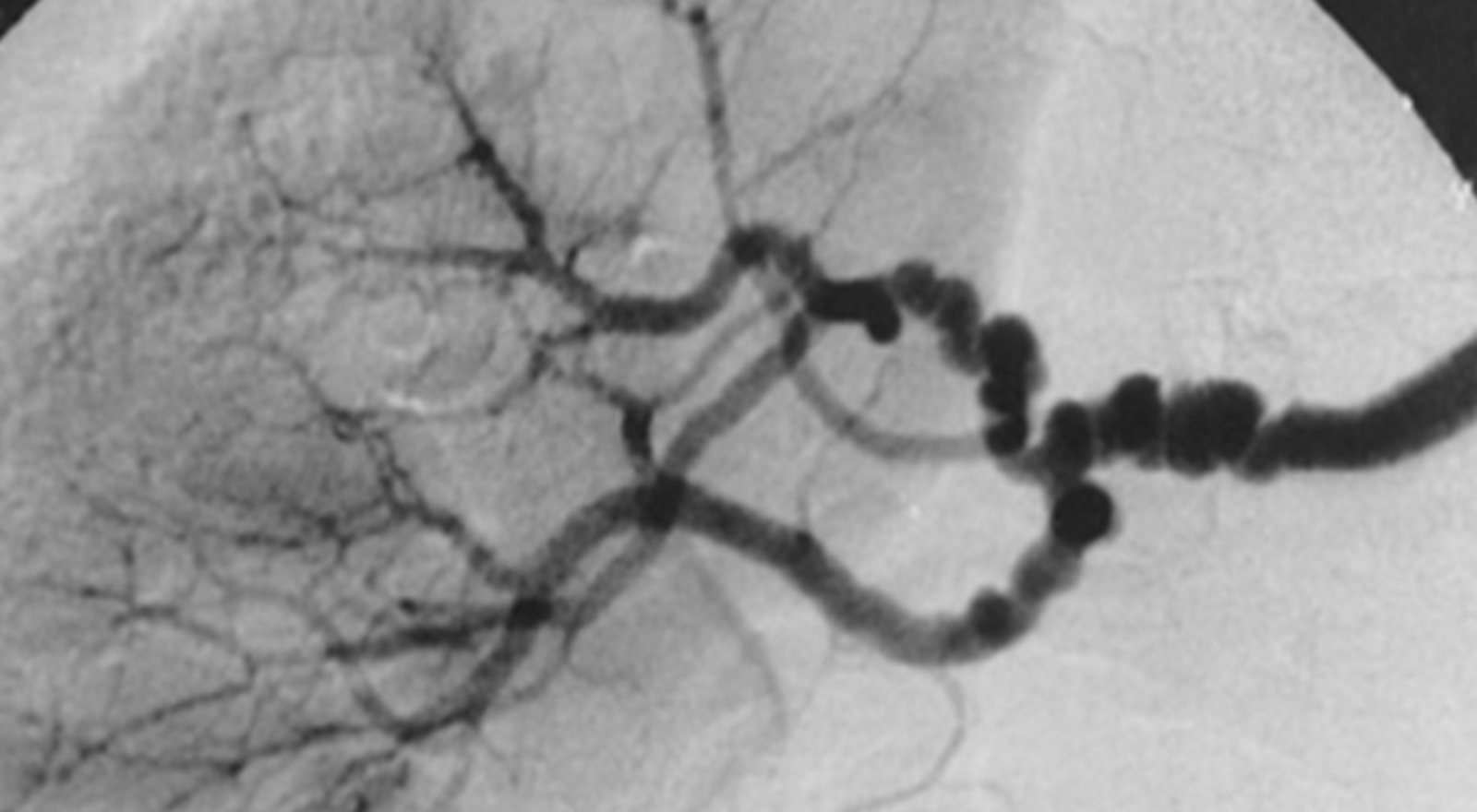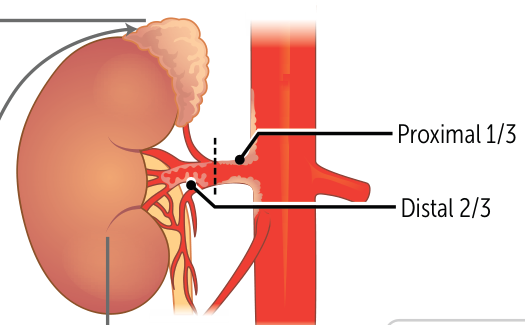Fibromuscular dysplasia (FMD), a disease that primarily affects young to middle-aged women, is characterized by the proliferation of connective tissue and muscle fibers within the arterial vessel walls.
Epidemiology
Etiology
Pathophysiology
Fibromuscular dysplasia (FMD) is an idiopathic, non-inflammatory, non-atherosclerotic, developmental condition that primarily affects small and medium-sized muscular arteries.
- FMD results in ischemia by one or more of the following mechanisms:
- Stenosis
- Formation of saccular aneurysms → aneurysmal rupture
- Arterial dissection → arterial occlusion
- Renal artery stenosis → ↓ renal perfusion → compensatory activation of the renin–angiotensin–aldosterone system → secondary hypertension
- Disease localization
- Renal artery (renal FMD; ∼ 75–80% of cases)
- Usually bilateral renal artery stenosis
- Carotid and vertebral artery involvement (extracranial cerebrovascular FMD; ∼ 65–75% of cases and often bilateral)
- Renal artery (renal FMD; ∼ 75–80% of cases)
Clinical features
- Renal FMD
- Clinical features of renal artery stenosis
- Secondary hypertension
- Abdominal bruit
- Symptoms of chronic kidney disease
- Flank or abdominal pain
- Clinical features of renal artery stenosis
- Cerebrovascular FMD
- Headache, neck pain, pulsatile tinnitus
- TIA, amaurosis fugax, stroke, Horner’s syndrome
- Cervical bruit
Diagnostics
- Best initial tests for renal FMD: duplex ultrasonography and/or CT angiography
- Common finding: “string of beads” sign

- Common finding: “string of beads” sign
- Differential diagnostics

| Feature | Fibromuscular Dysplasia (FMD) | Atherosclerosis |
|---|---|---|
| Patient | Young Females | Elderly Males |
| Risk Factors | Smoking, Female sex, Genetics | Smoking, DM, HTN, Hyperlipidemia |
| Location | Distal 2/3 of renal artery | Proximal 1/3 (Ostial) |
| Imaging | ”String of beads” | Focal narrowing |
| Pathology | Medial fibroplasia | Plaque / Foam cells |
| Treatment | Angioplasty (PTA) | Medical Mgmt (ACEi/ARBs*) |